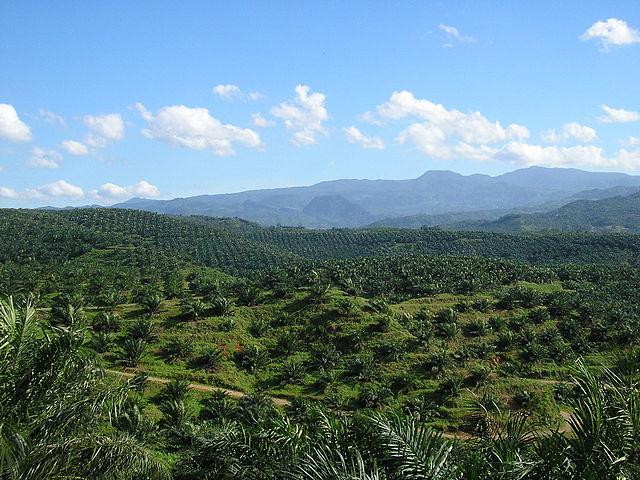How a New CEO Can Change Company Mindset On CSR


By Noel Griffith
Corporate social responsibility (CSR) is an often overlooked area within small to medium organizations. It’s not just large companies that have a responsibility to give back to their communities, neither is it just large companies that can benefit from being active in their communities with their CSR work.
CSR typically relies on man-hours, and in my experience, the amount of people willing to put in those man hours varies greatly from company to company. The willingness of employees to go out into the community and make a difference stems from two things:
- The culture already in place in the organization
- The participation and involvement from the C-suite of the organization
Both of these areas are driven by the CEO with support from the C-suite. The perfect time to make cultural changes and implement a CSR program that employees are going to be enthusiastic about and want to be involved in is when a new CEO comes into an organization.
Being a CEO who makes an impact and changes culture within an organization
I’ve seen new CEOs enter an organization with all the best intentions yet fail to make a positive impact time and time again. To make a real difference, and a difference that lasts, you need to be a leader who possesses individuality, character, forward-thinking, a varied skill-set and a real, tangible human aspect.
If you want your staff to follow your CSR directive and believe in what they are doing, they need to see how much it means to you. I am always amazed when I hear CEOs tell me that CSR isn’t important to their company, or they don’t think it makes enough impact on their bottom line to invest time and money.
CSR makes a huge difference to any company, no matter what size. The four key areas CSR has a positive effect on are:
- Improving the public image of the organization
- Building employee relationships
- Helping to secure new investors
- Improving company exposure and media coverage
If you look at any of those four points above, it should be easy to see how you can improve the internal and external relationships for your organization.
When entering a new organization, to change the mindset and culture that’s already well-rooted in regard to CSR you need to address the following:
- Improve employee awareness to the benefits of CSR
- Demonstrate your willingness to get involved
- Form a CSR team and assign responsibilities to employees
If you incorporate all of the above, you are not only leading by example, but you are also empowering others to have an active responsibility in the company’s CSR objective. Empowering others and delegating responsibility gives them something to own.
The most effective and proactive companies always have a CSR team. This is a small group of people that get together weekly to discuss new projects and share feedback on past projects.
It’s not just the employees’ attitude to CSR that can be changed by implementing these changes. You can start to grow a more productive culture. Strengthen employee relationships, and strengthen the whole core of your organization.
You can’t force or fake company culture. Culture has to be grown and managed by everyone within the organization. You are in the position to facilitate and oversee this, and for me is one of the key, pivotal roles of a CEO.
Your company image is driven by the quality of CSR work you carry out in the community. This can’t be faked either. Showing a genuine willingness from the top, down to the middle-management and base employee level, is imperative. So form a CSR committee today, empower your employees to take control of new CSR projects, and take an active part yourself.
Noel Griffith has worked as a careers advisor and recruitment consultant for a number of years both on a one-to-one basis and with large corporations. Finding a passion for blogging and sharing his experiences with a wider audience in recent years you can find him at careerswiki.com, or contact him directly at [email protected].
3p Weekend: In the Wake of Orlando Tragedy, Companies Step Up


(Image: Residents carry a gay pride banner through the streets of Madison, Wisconsin, during a vigil and parade in memory of the victims of the Pulse nightclub massacre.)
In the early hours of Sunday morning, a gunman entered Pulse, a gay nightclub in Orlando, Florida, just after last call. By the end of his rampage, he claimed the lives of 49 people and injured 53 more. Suddenly the LGBTQ community, which celebrated victory in the fight for marriage equality only to be bogged down with questions about public bathrooms, finds itself at the epicenter of the deadliest mass shooting in American history.
Those in the community and their allies are still reeling from the attack, which happened in one of the few safe spaces where they feel free to be themselves. But the lone light shining amidst the darkness is the outpouring of support: from citizens at vigils all over the world and on social media through hashtags like #WeAreOrlando, #LoveIsLove and #SayTheirNames; from NGOs and civil-society groups who sprung quickly into action; and even from our country's supposedly most callous entity, corporate America. As we cope with this senseless tragedy, the kindness of these people and organizations can, at the very least, prove there is hope.
JetBlue
"Like many of you, we continue to watch reports of the Orlando nightclub shooting with great sadness," budget airline JetBlue said in a press statement, released on Monday in both English and Spanish. "This weekend’s events are felt by all of our 19,000 crewmembers, many of whom live in, work from and travel through Orlando – one of our focus cities ... We want to do our part to help the victims of this tragedy, as well as support the Orlando community through this difficult time."
Along with a cash donation, JetBlue offered free seats to and from Orlando for family and domestic partners of victims who were killed or injured in the massacre at Pulse. And JetBlue flight attendant Kelly Davis Karas shared the story of one passenger that is going viral. On a flight from Maine to Orlando, Karas and her fellow flight attendants decided to circulate some sheets of paper to give passengers a chance to show their support to the grandmother of Luis Omar Ocasio-Capo, 20, one of the youngest victims.
Passengers responded by writing lengthy letters, and when the flight touched down in Orlando, "every single person" stopped to offer condolences to the bereaved grandmother, Karas wrote on Facebook. The story has since been shared over 100,000 times. "I'm crying," wrote one commenter. "This is what America is."
UnitedHealth Group
People both inside and outside of Orlando are struggling to make sense of this unspeakable act and find ways to process their grief. While most of us could likely use someone to talk to right now, not everyone has the option.
UnitedHealth Group responded quickly and in kind by opening its mental-health counseling help lines to anyone -- insured or not. Here is the company's statement and contact information, via Orlando Weekly:
"UnitedHealthcare and Optum, the health benefits and services companies of UnitedHealth Group, are taking immediate action to support people affected by the recent mass shooting at a nightclub in Orlando. The company is opening Optum's Help Line, providing affected residents access to specially trained mental health specialists."Optum's toll-free help line number, 866-342-6892, will be open 24 hours a day, seven days a week, for as long as necessary. The service is free of charge and open to anyone. The help line offers specially trained Optum mental health specialists to help people manage their stress and anxiety so they can continue to address their everyday needs."
Walt Disney Co.
Orlando Mayor Buddy Dyer established the OneOrlando Fund immediately following the tragedy. The fund's purpose, according to its website, is to "provide a way to help respond to the needs of our community, now and in the time to come, after the effects of the Pulse tragedy." The fund will support nonprofits tending to the needs of victims and their families, as well as other nonprofits related to the LGBTQ, Hispanic and faith communities.
On Tuesday, Walt Disney Co. -- which operates its flagship Walt Disney World Resort a mere 15 miles from the Pulse nightclub -- became the fund's largest corporate donor, committing a minimum of $1 million. Additional eligible donations from Disney employees will be matched dollar for dollar, the company said. The park will also offer complimentary reservations for the families and friends of the victims, Fortune reported.
“We are heartbroken by this tragedy and hope our commitment will help those in the community affected by this senseless act,” said Bob Chapek, chairman of Walt Disney Parks and Resorts, in a statement. "We mourn the loss of the victims and offer our condolences to their families, friends and loved ones.”
At least two of the victims, Xavier Emmanuel Serrano Rosado, 35, and Jerald Arthur Wright, 31, were Disney employees, reports the Daily Beast.
Publix
Grocery chain Publix, which has a large presence in Florida, committed $25,000 to the OneOrlando Fund. But its quick thinking and kindness immediately following the tragedy was perhaps even more inspiring: In the early hours of Sunday morning, Publix employees took to the streets of Orlando with free food, water and ice for first responders, as well as friends and family of the victims, Fortune reports.
Starbucks
Starbucks is a longstanding supporter of the LGBT community and was even called out as a best-practice example by former BP CEO John Browne in his book, “The Glass Closet: Why Coming Out Is Good Business,” about his double life as an executive and a closeted gay man.
Starbucks CEO Howard Schultz sent a letter to employees immediately following the tragedy, and the company donated $50,000 to the OneOrlando Fund. In response to requests from employees, the company also put up a resource page on Wednesday to help team members support victims and their families.
The grandson of the aforementioned JetBlue grandmother, Luis Omar Ocasio-Capo, was a Starbucks employee. Another employee remains in critical condition, the company said in an update to its team members this week. "In times like these we need to band together to rise above hatred, indifference and cowardice," the company wrote, "and find solace and compassion among one another."
Wells Fargo and JPMorgan Chase
Two Wall Street giants also opened their pocketbooks in response to the Orlando tragedy. Wells Fargo committed $300,000 to the OneOrlando Fund, while JPMorgan said it would give up to $500,000. The latter banking giant will give $300,000, and match employee donations, dollar-to-dollar, up to $100,000, Fortune reported. A JPMorgan employee, Christopher Joseph Sanfeliz, 24, was among those murdered at Pulse.
How can I help?
If you're looking for a way to help the victims of the Orlando tragedy and their friends and family, be wary of online scams. While it's unimaginable to think that someone could use such an event for personal gain, it is more common than you think.
Both the Huffington Post and Time magazine have published guides to supporting Pulse victims -- with either cash or kindness -- without getting scammed. If you or someone you know is facing mental-health challenges as a result of the tragedy, the Huffington Post story also provides a list of resources on how to get help.
Image credits: 1) Flickr/Sarah Mittermaier; 2) Flickr/Victoria Pickering; 3) Flickr/kthtrnr; 4) Flickr/Fibonacci Blue
Transportation Sector Now the Largest Contributor to U.S. Emissions


For years, clean energy and power advocates have focused on the nation’s electricity grid as the primary cause of pollution and emissions in the U.S. And of course, they had a good reason: America’s reliance on coal for generating electricity is why the utility sector was long the nation’s largest contributor to CO2 emissions. But as the most recent monthly report from the U.S. Energy Information Agency (EIA) reveals, the transportation sector’s emissions have surpassed those from the power sector during the first two months of this year.
The difference is small — only four-tenths of 1 percent (32.1 versus 31.7 percent). Nonetheless, this trend shows success by both U.S. energy policy and the markets in reducing emissions in one sector, albeit while struggling to contain the amount of emitted CO2 in another. In fact, emissions from transportation in the U.S. keep creeping upward, while those spouted out by power plants are on a rapid decline.
Despite presidential hopeful Donald Trump and U.S. coal companies continuing to skewer the Obama administration over the coal industry’s collapse, the stubborn fact is that natural gas, not renewables, is behind its demise. The combination of cheap natural gas and regulations mandating reduced emissions have contributed to the transition away from coal. Critics point out problems related to natural gas production, such as fracking, but the difference in emissions between the two fuels is as high as 49 percent. While natural gas is an imperfect alternative to coal, it burns cleaner than coal. Think of this energy source as a steppingstone toward the greater deployment of renewables, as wind and solar both become cheaper and more scalable.
The natural gas sector has had its struggles, and in some markets, including California, renewables could overtake natural gas as the largest source of power generation. Nevertheless, many energy analysts suggest the industry’s future in the U.S. is still bright, although Bloomberg New Energy Finance (BNEF) forecasts that the global consumption of natural gas will peak by the end of the next decade.
The outlook for the transportation industry’s impact on U.S. emissions, however, is more of a mixed bag.
Indeed, sales of electric vehicles in the U.S. are on an upward trend, and if sales of Telsa’s Model 3 prove as robust as the automaker promises, we could see a transformation of the U.S. auto industry in the next decade. But even though the U.S. automakers say they are committed to the advancement of electric cars, it could be years before other models such as the Chevy Bolt and Ford Fusion Energi take the U.S. market by storm.
So for now, if you view emissions from the transportation sector as a war, think of electric vehicles as wielding a butter knife against an onslaught of machetes. And you can thank the two-year plunge in petroleum prices for this stubborn trend.
While the news wires were laden with reports predicting the U.S. auto industry could hit a steep decline, the fact is that after its near death during the 2008-2009 fiscal crisis and U.S. bailout, 2015 saw a record year in automobile sales. SUVs and sedans largely fed that growth (and of course, robust auto sales have been helped by low interest rates).
And whether you want to blame suburban sprawl or longer road trips, Americans are driving more miles than ever before, happily hitting the road after a decade that revealed year-to-year miles driven were largely stagnant. Furthermore, while the Obama administration has been successful at implementing higher fuel-efficiency standards for cars, the truth is the impact of such mandates could be tepid at best.
Whether one abhors or celebrates them, the truth is that the Obama administration’s policies related to clean energy and power generation is only one of many moving factors behind America’s energy consumption. Watch for the market to largely fuel a transition from hydrocarbons to renewables and other cleaner forms of power and fuel. BNEF, for example, suggests the use of fossil fuels will soon peak if it has not already. And as renewables get cheaper, watch for more corporations to invest in clean power while more citizens seek rooftop solar or investments in community solar projects. Finally, if Tesla and its competitors roll out cars that slay “range anxiety” (and eliminate that quarterly annoyance of getting an oil change), Americans could witness a technological revolution that was unthinkable only a few short years ago.
Image credit: Leon Kaye
Zero-Deforestation Commitments: What Do They Mean?


A new report from the nonprofit organization Forests Trends takes a look at corporate deforestation commitments -- and highlights both progress and challenges toward the ultimate goal of ending deforestation in corporate supply chains.
The report, entitled Supply Change: Tracking Corporate Commitments to Deforestation-free Supply Chains, analyzed the more than 500 publicly-available commitments from 366 companies that purchase one or more of four major commodities connected to global deforestation: palm, soy, timber and cattle.
Most of these commitments emerged due to both the work of leaders in the corporate sustainability field and to pressure from civil-society organizations such as Greenpeace and the Rainforest Action Network, which have shined a light on the major environmental impacts of the palm oil industry. Last year's devastating fires in Indonesia were only the most glaring example of what's become all too common in far too much of Southeast Asia.
The question is: Do these commitments make a difference? This report is intended as a resource to answer that question, and it's part of a wider effort by the Forest Trends' Supply Change project to put all the available information about private-sector deforestation commitments online. This will allow practitioners and investors to see what progress is being made, and help the rest of us understand how the private sector is working to eliminate deforestation from their supply chains.
“Resources like Supply Change are empowering consumers and investors to monitor progress – and to hold businesses accountable for making good on their sustainability promises,” said Michael Jenkins, Forest Trends’ founding president and CEO, in a press statement.
The report found some positive trends and others that are disconcerting. While the increase in year-on-year commitments is commendable, it is not evenly disbursed across industries. For example, palm oil, a supply chain we've covered quite a bit here at TriplePundit, is the commodity with the most commitments, with 61 percent of tracked companies having adopted pledges. However, cattle and soy are lagging far, far behind: Only 15 percent and 19 percent of companies sourcing these commodities have commitments on the books. This is especially worrisome as cattle is responsible for an astounding 10 times more deforestation than palm oil.
Another other major concern is the lack of transparency about these pledges. For one thing, only about a third of commitments are accompanied by publicly-available reporting data. Additionally, the vast majority of companies rely on self-reporting, an often flawed process.
“Ambitious corporate action is a critical prerequisite to achieving deforestation-free commodity agriculture,” Jenkins said. “But ambition alone is no substitute for accuracy and transparency, and commitments count the most when companies publicly disclose progress toward achieving them.”
There are some good models here, such as those employed by Proctor & Gamble and Unilever, two companies that use third-party verifiers in the field to help measure progress. We need to see a lot more of this, with involvement from civil society as well. Forest Trends is working closely with CDP (formerly the Carbon Disclosure Project), which aims to increase transparency and standardize reporting, with the hopes of getting companies to disclose more information.
It is great that more and more companies are making the right decision and committing to eliminate deforestation from their supply chains. But despite this wave of commitments, we still have a long way to go before we can achieve industry-wide, zero-deforestation supply chains across these major commodities. Better reporting, increased transparency, and more sharing of best practices, resources and knowledge between companies will be crucial to ensuring that we protect our planet's tropical heritage before it's too late.
Image credit: Achmad Rabin Taim via Wikimedia Commons
Apple’s Foray into Renewables Should Worry Utilities


Last week, Apple quietly filed some documents with the Federal Energy Regulatory Commission (FERC), requesting the agency accept terms such as its “market-based rate tariff” and “grant for certain blanket authorizations.” Meanwhile, blogs covering Apple were buzzing with the news that one of the the world’s most valuable companies registered a new subsidiary, Apple Energy LLC, in a Delaware court. This new business unit will be operated from the company’s headquarters in Silicon Valley.
So to cut to the chase and translate all the legalese, the Cupertino-based electronics and entertainment company is now officially entering the energy market. And utilities should be worried as Apple’s entry into the renewables buying-and-selling markets could become a huge threat to their business.
Complaints about the way utilities operate are not just about their reliance on fossil fuels, whether they run on coal or cleaner-burning natural gas. Yes, many clean-power advocates will say the U.S. has abundant sources of solar, wind and even biomass to wean the country away from conventional fuels — and they make the case that renewables could hedge the country against volatile energy prices and, of course, the risks of climate change.
But then there are the arguments that we rely on a 19th-century grid for 21st-century needs, and this highly centralized grid exposes us to risks from blackouts to even terrorism.
Of course, utilities defend the system as it is, and in their defense, these companies make massive investments and enter into energy contracts years in advance. As Quartz analyst Tim Fernholz and others have explained, the rapid proliferation of renewable power projects such as commercial and solar installations threaten to disrupt the utility industry as it exists and operates today.
Meanwhile, companies that have largely invested in renewables, from Walmart to Kohl’s to Mars Inc., generally can only sell any unneeded power to the local utility — and even that process is often complicated. After all, according to federal law, only utilities can sell energy at a retail rate to customers. As of now, residents and business can only sell the excess electricity they generate to energy companies and utilities at wholesale prices.
But Apple, which says renewables generated 93 percent of its power last year, now has a subsidiary that can operate as an independent power company. As is the case with many companies with huge investments in solar or wind power, that excess electricity produced during the day (or night) offers sizable revenue potentials. Not all states or municipalities, however, have favorable regulations in place that allow such firms to maximize this economic potential. And as companies seek new opportunities to generate revenue, ensure their long-term energy security, and assuage their stakeholders in proving that they are responsible and sustainable businesses, more of them will certainly follow Apple’s lead.
Meanwhile, plenty of businesses will also seek more affordable, secure and reliable sources of power — but they just do not have the cash and scale of Apple, the rooftop space of Walmart or the highly centralized operations of MGM Resorts International. They may not have any energy expertise, period.
But despite what analysts keep telling us about the energy markets, the only thing we can really predict about this sector is that it has a history of unpredictability. And in any event, despite low and stagnant fossil fuel prices, renewables keep getting cheaper and more scalable. For a procurement manager or executive at any sized company, the possibility of Apple and its ilk entering the energy business offers opportunities to save his or her company money — and look really good to the boss. The result is a market that will eventually nudge regulators to chip away at the wall protecting utilities from more players within their industry.
For Apple, a booming clean-energy market also helps strengthen its business portfolio. The company has a long history of coming out with new devices just its products appear to have plateaued. But as an Accenture study issued earlier this year suggests, customers may have hit their fill of gadgets for a while, which is why some tech companies, and certain gadgets, are struggling. Apple is already following the trend of other tech giants such as IBM and HP, as it seeks to complement products like the iPhone and iPad with services such as subscriptions. Considering its home base, California, is already leading the U.S. renewables boom, the company is in a prime location to start wheeling and dealing.
Apple may not market an “iElectrons” or “iPower” anytime soon, but this company is clearly wielding a hot iron ready to brand and sear the nation’s stubborn utility companies. And these recent moves will likely keep their executives awake at night for many years to come.
Image credit: Mark Mathosian/Flickr
If Starbucks Were a Bank, It Would Be a Billion-Dollar Force


Starbucks is like a scrappy athlete. Just when it gets knocked down by some controversy or non-controversy — as in, not paying its share of taxes or rolling out allegedly sacrilegious cups at Christmastime — the company responds with robust sales and interesting programs within its corporate social responsibility agenda.
And let’s face it, much of the company’s success is because of gift cards. We have all been in a bind where we need a gift for that friend or relative — and on Christmas Day, if you were too lazy or overwhelmed to do your shopping, Starbucks is open on that very morning so you can gorge on those last-minute gifts. To that end, here’s one statistic that will leave you blanching, or blushing, as red as last year’s holiday cups: Business Insider estimated that 1 in 6 adults scored a Starbucks gift card during the holiday season last year. For a while, if you were generously inclined, you could even send your Facebook friends the gift of a Starbucks gift card.
Despite changes to Starbucks' customer loyalty program that make it far more parsimonious, which infuriated many of its customers, its gift cards -- and smartphone app -- remain a rousing financial success.
At one time you could work Starbucks’ system and score a free treat at any price for as little as $12 to $15. Now that figure has soared to $63. Customers may grumble, but they are still buying their morning Starbucks and loading their cards. Therein lies one of many reasons that, if Starbucks were a consumer bank, the amount of deposits in its gift cards would leave many banks and credit unions in the dust.
According to the Wall Street Journal, which analyzed data from S&P’s Global Market Intelligence division, Starbucks has accumulated a tidy $1.2 billion stored on its customers’ gift cards.
That should not be surprising considering S&P estimates that 41 percent of Starbucks’ customers make their purchase via one of its plastic gift cards; another 24 percent of those transactions are made with the company’s smartphone app. Take a look at these facts:
- An estimated 11 to 12 million customers in North America participate in the Starbucks loyalty program;
- Consider that there are plenty of Starbucks gift cards forgotten or never used;
- And the number of customers who have signed on to use the program’s auto-load feature if their balances fall to a certain level;
It is no surprise that the amount of deposits in these accounts reach a total that exceeds the likes of California Republic Bank, Customers Bancorp, Discover and Green Dot Corp.
The amount Starbucks has scored, however, is dwarfed by PayPal, which boasts just over $13 billion spread across its customers’ accounts. PayPal does not pay interest on those balances, which has earned growls from plenty of bloggers, but the online payments behemoth claims that such a cushion is necessary in the event merchants fail to follow through on promised goods and services.
So is this some nefarious plot, in the tongue-in-cheek words of one writer, to put the U.S. banking system on a “Frappuccino Standard” and hose consumers? Probably not; Americans are increasingly gravitating toward electronic financial transactions, especially on mobile devices, out of the ease of use and improved security. But the trend has created a headache for many corporations as they sort out how to report this income, if at all. The Financial Accounting Standards Board (FASB), which seeks to improve accounting guidelines within the U.S., laments the fact that regulatory bodies, including the SEC, have failed to offer guidance on this front.
Image credit: Darren Barefoot/Flickr
Creative Solutions to Laos' Ongoing Problem with Conflict Weapons


By Forrest Curran
Bombs were dropped on Laos every eight minutes, 24 hours a day, for nine years; or the equivalent of 1,000 pounds for every Laotian person. But very few know about this outside of Laos.
Today many of these bombs still sit active underground, known as unexploded ordinance (UXO): 30 percent of what was dropped on the country failed to detonate and is presently alive underground. This chilling legacy from the bombing campaign that lasted from 1964 through 1973 still prevents Laos from attaining self-sufficiency and has locked the country into a cycle of poverty.
Although Laos' economy is largely agriculturally based, as one of the most bombed countries in the world, this prevents the farmer-population from expanding their land for agricultural use in fear of consequences of the UXOs. There is clear under-utilization and lack of efficiency in the use of agricultural land due to the present situation that has forced Laos to be limited even in one of the most basic sectors of the economy. The lack of options forced Laos to create a dam in the Mekong River to create revenue from energy, and has thus become the center of international controversy of polluting a vital water source for neighboring countries.
Children who were born far after the bombings live through the consequences of the past, as the UXO situation of Laos not only prevents Laos from attaining economic prosperity and growth, but has also created a major safety hazard around the country. Forty percent of the total casualties related to UXOs involve children, often playing in a clearing of land before the ground blew up underneath them. The literacy rate is also very low, especially in the mountain villages, where accessibility to schools is limited due to the road conditions stemming from the UXOs. At the current rate of de-mining funding by the international community, it will still take another 800 years to fully clear the land of active UXOs.
MAG, a Noble Prize-winning de-mining NGO, has been largely the catalyst of change and de-mining in this country since the beginning. MAG trains, educates and organizes local de-mining teams to clear Laos of unexploded ordinance. MAG also forms all-women teams, which empowers Laotian women through a higher salary and allows them to gain status and respect in their villages. Many of the women work with pride in being able to support their families as well as serving to better the future of the country, where 40 percent of the de-mining teams in Phonsavan province are now all-women teams.
MAG has brought about astonishing change and improved the situation of the country, but it consistently faces concerns with the lack of international funding which is based from the lack of awareness by the international community.
In the village of Ban Napia, located in the mountains of the rural area of Phonsavan province, my social enterprise, Purple Buddha Project, is highlighting the issue in a new way: recycling aluminum remnants of war scrap to reconstruct an object that globally signifies negativity into jewelry and to create constructive change in Laos.
Upcycling plane parts, bullet shells and bombshell fins, each jewelry piece is embedded with actual pieces of history, where Purple Buddha Project looks to use the jewelry as discussion-starters and to spread awareness and knowledge of Laos. Each jewelry piece is created by an artisan employed by a local fair-trade cooperative, and the each purchase of jewelry contributes nine meals to schools that sponsor disadvantaged children of Southeast Asia to attend school free of cost. You can support the Purple Buddha Project here.
Image credits: Purple Buddha Project
Forrest Curran is Creative Director of Purple Buddha Project, a social enterprise that transforms weapons of conflict into jewelry. Purple Buddha Project currently works in Cambodia to transform gun bullets and bomb shells into jewelry pieces.
Will Ending Energy Poverty Produce a Unicorn?


By William Brent
A huge untapped opportunity exists in the energy industry today: serving the 1.1 billion people worldwide who have zero access to electricity, about half of whom live in sub-Saharan Africa.
A growing number of startups, including investor magnets like Off Grid Electric, M-KOPA and Powerhive, are already addressing this opportunity and signing up hundreds of thousands of new customers to their rooftop solar and mini-grid services.
This has leaders in the energy access sector asking: Will decentralized renewable energy in emerging markets produce a private technology startup with a valuation of at least $1 billion -- aka a unicorn? Maybe.
More than 100 business, investment and government leaders gathered in San Francisco this month for EnergyAccessX, an official initiative event of the Clean Energy Ministerial, to discuss ways to accelerate solutions for universal clean, modern, affordable energy access by 2030 (No. 7 on the U.N. list of Sustainable Development Goals).
Emily Kirsch, CEO of solar business incubator Powerhouse, said entrepreneurs will lead the energy transition from fossil fuels to renewable energy. "Entrepreneurs will win this transition, and we'll need many more entrepreneurs," she said. "This is just the beginning. It's a drop in the bucket for what will be in 10 years."
But only a specific type of entrepreneur will scale, said Shashi Buluswar, co-founder of the Institute for Globally Transformative Technologies.
"I don't think the utility of the future -- if it will reach any scale -- is a social enterprise," he said, suggesting that institutions with "serious money," not just grants, need to enter the market and be ready to take substantial risk.
Pradeep Pursnani, deputy director of the Shell Foundation, said: "It's less about a unicorn to solve energy access, and more about integration of the components already out there," adding that "the No. 1 disruption needed is a whole bunch of small disruptions," including in consumer finance, hiring, fundraising, call centers, etc.
Nicole Poindexter, CEO of Energicity, added that the companies absorbing that capital will be many, not just one: "The unicorn will be a whole bunch of small utilities, which will be high growth for a while," Poindexter said. But she cautioned that the companies in the business of solving energy access tend to be slower growth, lower yield, which is a disconnect with the typical profile for venture capital investments.
The question of what type of capital the energy access sector needs most is something the Overseas Private Investment Corp., the U.S. government's development finance institution, knows a lot about, being a big supporter of private decentralized renewable energy companies in Africa and India.
"It's important that companies have the right capital behind them," said OPIC senior advisor Josh Bushinsky. "Unicorn describes a lot of venture money in the door, but that's not necessarily right for the companies that are going to solve the need." Bushinsky pointed to OPIC's new product that addresses inventory finance, a financing tool that isn't sexy but important because it unlocks otherwise tied up capital for quicker deployment.
One company that has been successful in tapping into various pools of money, including equity, debt and grants, is Off Grid Electric, which has raised about $50 million in equity and $50 million in debt. At EnergyAccessX, the company was called a "unicorn riding a black swan."
"Off Grid Electric navigated the entire stack of capital ... that came together in one magic opportunity. How do we do that again?" asked Tom Price, director of strategic initiatives and biomass for mini-grid company All Power Labs.
If that does happen, a unicorn may emerge. It's not far-fetched given that the decentralized renewable energy industry is estimated to be a $12 billion a year market.
Image courtesy of the author
William Brent is a director at Power for All, a global campaign to accelerate the deployment of decentralized renewable power (rooftop solar and mini-grids) as a key to ending energy poverty.
This Incubator Has Saved 200,000 Premature Babies


In 2013, the World Health Organization reported that preterm birth complications are the leading cause of death among children 5 years and younger, responsible for almost a million deaths that year. The WHO also estimated that 75 percent of those children could have been saved had there been a cost-effective intervention.
Enter Embrace.
The Embrace Warmer is a cheap infant incubator that creates heat and fights off neonatal hypothermia -- and it's credited with 200,000 babies saved and counting. The most impressive feature of the baby cocoon is the price, which is affordable in the countries most affected by preterm birth complications — India, China and Nigeria lead the pack.
Embrace first released its warmer in 2011 and the design didn’t take long to save lives. A two-pound baby boy left to die on a street corner in Henan, China, was rescued by a Beijing orphanage and wrapped in the infant warmer for a full month. The boy survived and is now part of a family residing in Chicago, thanks to the waxy insert capable of maintaining 98.6 degrees for eight straight hours.
The Beijing orphanage was lucky enough to have an Embrace Warmer in its possession, in large part due to the inexpensiveness of the product. Embrace costs $400, compared to $20,000 for a traditional incubator.
The product was conceptualized following a class project from graduate students at Stanford University. They were challenged to create a cheap alternative to protect babies who didn’t have the body fat to regulate their own temperature. The product has grown since its introduction five years ago, reaching new deals with manufacturers and joining Thrive Networks, an international nonprofit looking to improve health conditions and standards in Asia and Africa.
Embrace primarily works in India and Uganda, with additional local partners implementing a program in Afghanistan, according to its website. The incubator treats more than 1,000 babies in Embrace’s program sites each month.
Image credit: Annie Marie Musselman, used with permisison
BBC journalist Mishal Husain to honour 2016 Ashden International Award winners


by Sangeeta Haindl — Forward thinking organisations championing solar energy in India, East Africa and beyond; businesses improving the health of citizens through sustainable buildings and access to clean water in China and Indonesia; and a not-for-profit connecting communities with vital services—all are winners of the prestigious 2016 Ashden International Awards. The winners were presented with their award at a special event hosted by BBC journalist Mishal Husain at the Royal Geographical Society in London on 9 June. The Ashden Awards are a globally recognised measure of excellence in the field of sustainable energy, where each winner receives up to £30,000 prize money as well as tailored support to scale up their work.
Today 1.3 billion people lack access to modern forms of electricity. While some three billion—more than a third of the world’s population—cook on smoky, inefficient stoves and fires, causing dangerous indoor air pollution, which causes 4.3 million premature deaths every year. That's more than double the number of people who die from malaria and HIV/AIDS combined. Sustainable energy is interconnected with so many other huge issues in the developing world such as access to clean water, livelihoods, women’s empowerment and access to financing to be able to start a business. The Ashden Awards finds ‘winners’ who are transforming lives with their game-changing work.
For example, Bridges to Prosperity, one of this year’s Award winners, not only builds bridges but also teaches communities how to build and maintain these connections to healthcare, education and employment. Overall, the organisation has completed 180 bridges in the past 14 years, serving more than 800,000 users around the world. This initiative wins the Eurostar Ashden Award for Sustainable Travel.
Frontier Markets offers a unique distribution model to provide high quality solar lamps and other solar systems to remote villages in India, using a network of trained women called Solar Sahelis. It has sold over 100,000 clean energy products in Rajasthan and Andhra Pradesh and wins the Ashden Award for Clean Energy for Women and Girls, supported by U.K. aid. The Shanghai Landsea Planning & Architectural Design Co. Ltd is a leading practitioner of green buildings in China and wins an Ashden Award for Sustainable Buildings, supported by Grosvenor. It has more than 40 projects totaling 2.5 million m2, including sustainable residential property for over 25,000 customers.
The above are just a glimpse of the outstanding 2016 Ashden International Awards winners. Since these Awards began in 2001, overall these winners have transformed the lives of more than 47 million people in the U.K. and in developing countries. They show how, with ingenuity and determination, even the toughest challenges can be overcome, where the impact of their work can be seen in enhanced educational standards, better health and improved livelihoods for the poor, as well as cleaner, more profitable businesses. They are creating a better future for everyone.
Photo Credit: Ashden International Awards